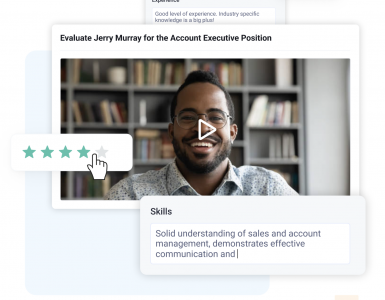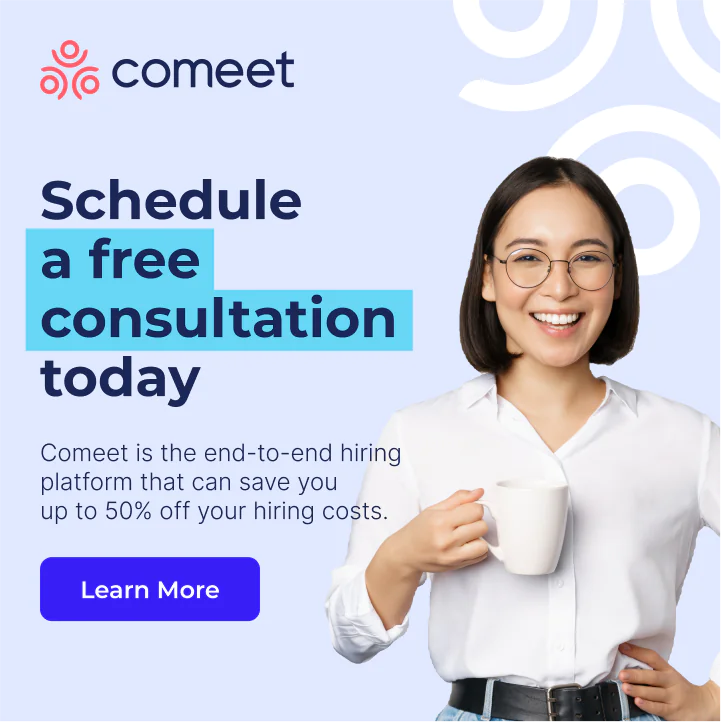Talent is a valuable resource in any organization, and your success in acquiring a skilled workforce can have a significant impact on whether your company will accomplish its goals. One way to attract high-quality hires is by leveraging full life cycle recruiting.
Although all six stages of the full cycle recruiting process are critical, companies must give special attention to hiring. Once you have your final list of candidates, you’ll begin conducting the last stage of the recruiting process before onboarding, the hiring stage.
Read on to learn more about the hiring stage of the full life cycle recruiting process.
What is full cycle recruiting?
Before we dive into the hiring stage of the process, let’s take a quick look at the stages of full life cycle recruiting. Full life cycle recruiting is a holistic solution that can empower small to medium-sized businesses to hire quality talent without large recruitment teams. It can also make large recruiting teams lean and efficient.
Full cycle recruiting channels an organization’s recruiting capabilities into a process. It allows a single recruiter to facilitate the entire apply-to-hire recruiting cycle.
While different organizations adapt the full cycle recruiting process to their unique needs, it takes place in six general recruiting process steps:
- Preparing: The full cycle recruiter works with the hiring manager to define the needs for the position. This process includes highlighting the problems the organization wants to address, the qualifications of an ideal applicant, and the job duties.
- Sourcing: The recruiter uses the job description and qualifications to create a list of candidates from a pool of applicants using job boards, social media, and other tools. Internal and passive candidates with the right qualifications can also be encouraged to apply.
- Screening: The recruiter reviews candidate resumes and applications from the sourcing step to eliminate unqualified candidates and offers a phone screen to assess candidates that make the cut.
- Selecting: Selecting is the critical stage after the initial screening, and it’s typically a collaborative effort between the full cycle recruiter and hiring manager. While the specifics will vary across different organizations, the selecting phase typically includes post-first-round interviews, additional evaluations, and scorecards.
- Hiring: The recruiter sends a job offer to the preferred candidate, and finalizes background and reference checks, pay negotiations, and start dates.
- Onboarding: The recruiter or HR team will take the final step in the full cycle recruitment process. They arrange for the employee to arrive and meet with a point-of-contact to ensure the organization makes a good impression to keep the new hire long-term.
What does the hiring stage consist of?
The hiring stage is a critical stage before the onboarding process begins. This step consists of background and reference checks, contacting candidates with an official letter, and negotiating the terms of the job offer.
Background checks and reference checks
Running a background check
A background check verifies a person’s identity, education, work history, and legal history.
Below are the basic steps of running a background check:
- Find information in public records and online databases
- Conduct a social media search
- Partner with a company that conducts background checks. They will provide you with results of their background searches, e.g., criminal history, employment verification, and credit report details.
Running a reference check
A reference check helps you find the perfect fit from your talent pipeline and protects your organization from a bad hire or poor performer.
Here’s how to go about it:
- First and foremost, you need consent from candidates to reach out to their previous employers.
- Ask for input from the interviewing and hiring panel to see their concerns and questions about the candidates. Ensure everyone is confident and comfortable with the new hire to ease the transition.
- Establish a list of questions before commencing the reference checks. Be sure to tailor them to the position, the candidates, and any concerns that arose during the interview. The questions should be specific and open-ended, so they don’t leave room for vague answers.
Job offer letter
Once you have your final list of candidates, you can share the good news over the phone. But right after making that call, you should send the candidate an official job offer letter inviting them to work for your company. A job offer letter contains crucial information, such as the job title, salary, and benefits to the prospective employee if they accept the position.
Sending the letter to the prospective employee is essential. Seeing written details may help the candidate evaluate their options and choose whether to accept your offer. Getting their decision faster allows you to begin the onboarding process sooner or go with another candidate if your first choice does not accept your offer.
Critical components of a job offer letter
Below are the crucial components and items to include in a job offer letter:
1. Introduction
The introduction gives you a chance to mention the obvious – that you are inviting the candidate to work for your company. It also provides a chance to address the recipient personally and professionally, which makes the job offer more engaging.
You can also make the candidate feel valued by including one or two sentences about why you chose them. A good job offer letter should show enthusiasm about bringing the person on board while remaining professional.
2. Job details
The offer letter should have information about the position’s duties, responsibilities, and work hours. Ensure you indicate whether the position is part-time or full-time and non-exempt or exempt from overtime in compliance with the Fair Labor Standards Act (FLSA).
3. Salary and commissions
Explain the pay cycle and present the salary offer as such. For example, if you will pay the employee bimonthly, you should include when the employee will be paid in the offer letter. Also, explain the commission, or bonus, structure (if there are commissions or bonuses) and the conditions an employee must meet to qualify for those payments.
4. Benefits package
Give an overview of the available benefits, e.g., 401(k), health insurance, paid time off, etc.
5. Contingencies and Conditions
Be sure to clarify any conditions employees must meet before they begin working for your company. For example, let people know if they will need to pass a drug screening or background check before starting.
6. Contact Details
Be sure to include your contact information in the letter in case the prospect has questions about the offer.
7. Instructions for Accepting the Job Offer
Indicate a deadline for the acceptance of the job offer to give the person enough time to think about it and get back to you with a thoughtful decision.
Negotiations
Sometimes the prospective new hire won’t accept your job offer immediately, and you may need to continue negotiating to reach an agreement that satisfies both the organization and the candidate. Negotiation should be handled with special care and attention. Most of the time, negotiations are about salary and benefits.
Here are some ways to ensure a successful negotiation with a prospective new hire:
Know Industry Trends
You should know the average salary and compensation trends offered by competitors in order to set a fair and realistic bar on how low or high wages can go. It also helps you explain the reasoning behind your counteroffer.
Prepare Facts and Data
Be ready with the key facts and data to correctly point out how your company’s process works and how you settled on the results. These key points help answer any follow-up questions a candidate might have, let them understand the company more, and know what they can negotiate for.
Be Truthful
Honesty and transparency are critical in every negotiation. Avoid overpromising just to lure the candidate into accepting the job offer, which will cause issues in the long run.
Comeet’s End-to-End Hiring Solution
The full life cycle recruiting process can be time-consuming and complicated if you are not using the right tools and resources. Mishandling the recruiting process increases the chances that you’ll lose the right candidate or hire the wrong one. However, partnering with an end-to-end hiring platform like Comeet will grant you access to the right tools and resources to help you get things done correctly. Reach out to us today for a demo of our hiring solution.





























